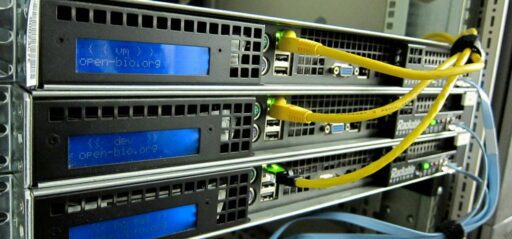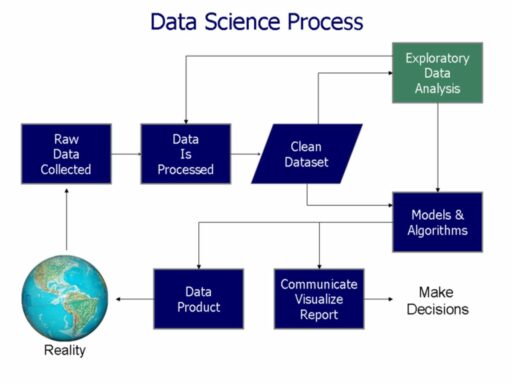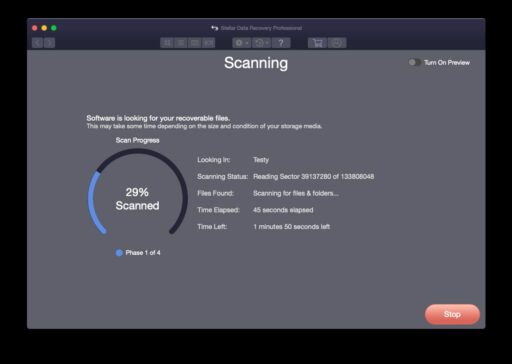Table of Contents
In the rapidly evolving landscape of data analysis, graph data structures have emerged as a powerful tool for navigating the intricacies of interconnected data sets. This article delves into the multifaceted aspects of graph data structures, from the comparison of graph queries with traditional SQL queries to the challenges of implementing graph databases, and the analytical advantages offered by graph algorithms. It also introduces PuppyGraph, a solution that bridges the gap between SQL and graph analytics, and looks ahead to the future of data analysis with graph structures.
Key Takeaways
- Graph query languages excel in navigating complex relationships, providing a simpler syntax than SQL for exploring data interconnections.
- Implementing and scaling graph databases pose technical challenges, but tools like PuppyGraph facilitate the integration of graph analytics into SQL environments.
- Graph algorithms, such as clustering and pathfinding, offer deeper insights by accounting for the strength and patterns of connections within data.
- PuppyGraph represents a significant advancement for companies looking to leverage graph capabilities without the complexity of traditional graph databases.
- The future of data analysis is embracing graph structures, which offer a new paradigm for understanding the complex interactions and dependencies within data.
Graph Queries vs SQL Queries


Ease of Navigating Complex Relationships
Graph databases are inherently designed to denote the connections between entities, offering a natural and intuitive way to represent complex relationships. Unlike SQL queries, which may require multiple complex joins to depict intricate relationships, graph query languages provide a syntax that simplifies the exploration of these connections.
For example, in recommendation systems, graph queries can quickly identify links between users, products, and interests, enabling nuanced recommendations. This is a task where SQL, with its reliance on joins and subqueries, may struggle with the complexity and scale.
Graph databases excel in environments where relationships are the focal point, often revealing insights that are difficult to obtain through standard SQL queries.
By mapping out complex relational dynamics, graph databases become a powerful tool for developers dealing with elaborate hierarchies and interlinked datasets, driving better decision-making and fostering innovation.
The Shortest Path Problem: A Case Study
The quest for the most efficient route between two points is a classic problem in graph theory, often referred to as the shortest path problem. This challenge is not just academic; it has practical applications in areas such as network design, transportation, and logistics.
In the context of graph databases, the shortest path problem is addressed using specialized algorithms like Dijkstra’s or the Bellman-Ford algorithm. These algorithms are designed to calculate the minimum distance between nodes in a weighted graph, where each edge has an associated cost or distance.
The power of graph databases becomes evident when dealing with complex networks where traditional SQL queries would require multiple joins and subqueries, leading to a significant increase in complexity and execution time.
Here’s a comparison of two popular algorithms:
| Algorithm | Complexity | Best for |
|---|---|---|
| Dijkstra’s | O(V log V + E) | Weighted graphs without negative edges |
| Bellman-Ford | O(V*E) | Graphs with negative edge weights |
*V represents the number of vertices, and E represents the number of edges in the graph.
Understanding the nuances of these algorithms is crucial for developers and data scientists alike, especially when the efficiency of data retrieval is paramount. The choice of algorithm can greatly affect the performance of graph queries, particularly in large and complex datasets.
Overcoming the Limitations of Traditional Joins
Graph data structures offer a robust alternative to traditional joins, enabling more intuitive modeling of complex relationships. Graph queries simplify traversals across vast networks, where relational databases would require cumbersome and performance-intensive joins.
- Ease of Use: Graph databases use nodes and edges, making them inherently suitable for interconnected data.
- Performance: Efficient graph algorithms can handle deep joins more effectively than relational databases.
- Flexibility: Adding new relationships or nodes to a graph database does not necessitate a schema overhaul.
The integration of graph-based analysis complements existing methodologies, fostering a comprehensive exploration of data’s structure and dynamics.
The transition to graph databases, however, is not without its challenges. It demands a shift in thinking from tabular to relational perspectives, and the need for specialized tooling and expertise can be significant barriers. Despite these hurdles, the benefits of graph databases in navigating complex data landscapes are increasingly recognized, paving the way for more widespread adoption.
Challenges of Implementing and Running Graph Databases


Technical Hurdles in Adoption
The transition to graph databases signifies a paradigm shift from traditional relational models to structures that prioritize relationships. The necessity to rethink data architecture can be a significant barrier to adoption, as it requires not only new knowledge but also a departure from the comfort of SQL queries.
Graph databases necessitate specialized tools for their unique operations, which may not align with existing SQL infrastructure. This often results in:
- Additional investments in new tools
- The need for extensive training
- Integration complexities
The dense interconnectivity of graph databases introduces scaling challenges that are not present in SQL databases. As the network of nodes and edges grows, so does the difficulty in maintaining performance, often necessitating advanced strategies or model adjustments.
Ultimately, these technical hurdles can slow down the adoption process, as organizations must weigh the costs and benefits of integrating graph technology into their existing systems.
Complex ETL Processes for Data Integration
Transitioning from traditional SQL databases to graph databases introduces a significant challenge: the ETL (Extract, Transform, Load) process. This process is not only resource-intensive but also demands a high level of expertise to manage effectively. The transformation of relational data into graph-compatible formats—nodes, edges, and properties—requires meticulous planning and execution.
The integration of graph databases necessitates specialized tooling and a considerable investment in time and resources. As data evolves, maintaining a responsive and up-to-date graph database becomes an ongoing effort.
Moreover, the adoption of graph databases often means investing in new tools and training to bridge the gap with existing SQL infrastructure. This can lead to a complex journey of integration, where the benefits of graph analytics must be weighed against the costs of tooling and expertise requirements.
Scaling Graph Databases for Large Datasets
Scaling graph databases to accommodate large datasets is a multifaceted challenge. The complexity of graph data, with its intricate web of nodes and edges, poses unique scaling difficulties that are not as prevalent in SQL or NoSQL databases. These challenges are often due to the dense interconnectivity of graph structures, where adding more hardware does not necessarily translate to better performance. Instead, it may require a reevaluation of the graph model or the adoption of more sophisticated scaling strategies.
The key to effective scaling lies in understanding the specific demands of graph data and the limitations of existing infrastructure.
Graph databases are unparalleled in their ability to map out complex relational dynamics, making them invaluable for navigating elaborate networks within data. However, the ETL (Extract, Transform, Load) processes and ongoing maintenance demands can be significant, especially as the size of the data grows. To address these issues, developers and data architects must consider both the technical and strategic aspects of scaling.
Alternatives such as graph query engines provide a pathway to leverage graph analytics without the extensive scaling hurdles. Tools like PuppyGraph enable the integration of graph analytics within SQL environments, offering a bridge between the structured world of SQL and the interconnected realm of graph databases.
The Analytical Advantages of Graph Algorithms


Clustering Algorithms and Community Detection
Graph algorithms offer powerful mechanisms for exploring the structure of data. Clustering algorithms in graph theory can identify communities or groups of nodes that are more densely connected to each other than to the rest of the network. This is akin to traditional clustering but enriched by the ability to account for the strength and pattern of connections between data points.
By incorporating graph theory into our analysis of distance metrics, we do more than enhance our ability to cluster and classify; we open the door to a more dynamic and interconnected view of data. This approach allows us to see beyond isolated clusters and individual paths, offering a holistic view of the data ecosystem.
By exploring the underlying structure of networks, patterns and anomalies, community detection algorithms can help you improve the efficiency and effectiveness of your systems and processes.
Applying these concepts to data correlations, we begin to see beyond simple pairwise relationships. We can identify clusters of variables that share strong connections, pinpoint variables that act as central hubs in the network, and trace the paths through which influence or information flows across the entire system.
Pathfinding Algorithms and Efficient Routing
Pathfinding algorithms are essential for analyzing and optimizing routes within a graph. They enable the discovery of the shortest or most efficient paths between nodes, which is crucial in various applications such as logistics, network design, and social network analysis. These algorithms, like Dijkstra’s and A* search, efficiently handle the traversal of complex networks, providing insights that are not readily apparent in non-graph data structures.
The efficiency of pathfinding algorithms is not just theoretical; it has practical implications in real-world scenarios where time and resource optimization are critical.
For example, consider the following table summarizing the performance of different pathfinding algorithms in a hypothetical network analysis:
| Algorithm | Average Time Complexity | Use Case |
|---|---|---|
| Dijkstra’s | O((V+E) log V) | Weighted, without negative edges |
| A* Search | O(E) | Weighted, with heuristics |
| Bellman-Ford | O(VE) | Weighted, with negative edges |
V represents the number of vertices, and E represents the number of edges in the graph.
The choice of algorithm depends on the specific characteristics of the graph and the nature of the problem being solved. While Dijkstra’s algorithm is well-suited for graphs without negative edge weights, Bellman-Ford can handle graphs with such weights, albeit with higher time complexity.
Comparing Graph and Traditional Clustering Techniques
Graph algorithms offer powerful mechanisms for exploring the structure of data, particularly through clustering. Clustering in graph theory identifies communities by examining the density of connections, a nuanced approach that traditional methods may not capture. This graph-centric perspective allows for a dynamic understanding of data relationships, transcending isolated clusters to reveal a comprehensive data ecosystem.
In contrast, traditional clustering techniques often rely on distance metrics that may overlook the intricate web of relationships between data points. By integrating graph learning, such as Product Space Clustering, analysts can leverage the interconnected nature of data, offering insights into how groups of similar elements, like products, are related.
The adoption of graph-based analysis signifies a paradigm shift in our comprehension of data structures, enabling a more holistic and interconnected view of datasets.
The table below contrasts key aspects of graph-based and traditional clustering methods:
| Aspect | Graph-Based Clustering | Traditional Clustering |
|---|---|---|
| Focus | Relationship patterns | Distance metrics |
| Analysis | Dynamic, interconnected | Static, isolated clusters |
| Data View | Holistic ecosystem | Individual data points |
Embracing graph theory not only enhances visualization but also revolutionizes our approach to data analysis. It paves the way for innovative machine learning applications and combinatorial optimization, fundamentally altering our approach to data relationships and analysis.
PuppyGraph: Bridging the Gap Between SQL and Graph Analytics


Integrating Graph Analytics into SQL Environments
The advent of tools like PuppyGraph marks a pivotal moment for organizations that aim to harness the analytical depth of graph queries within their existing SQL frameworks. This integration signifies a major stride in making graph analytics accessible, especially for businesses that previously considered graph capabilities too intricate or beyond their technical reach. By bridging the structured nature of SQL with the dynamic interconnectivity of graphs, PuppyGraph simplifies the transition from traditional to graph-enhanced data analysis.
Traditionally, SQL databases required a complex ETL process to enable graph querying. This involved transforming relational data into graph formats, such as nodes and edges, which was both time-consuming and technically demanding. With the introduction of graph analytics tools that integrate directly into SQL environments, these hurdles are significantly reduced. Developers can now perform graph operations without the need for separate graph databases or the development of complex ETL pipelines.
The integration of graph analytics into SQL environments is not just a technical upgrade but a paradigm shift in data analysis, offering a new lens through which to view and interact with data.
The following table outlines the key benefits of integrating graph analytics into SQL environments:
| Benefit | Description |
|---|---|
| Simplified Access | Direct use of graph queries within SQL. |
| Reduced Complexity | No need for separate graph databases. |
| Enhanced Insights | Ability to uncover complex relationships. |
| Streamlined Development | Developers can leverage existing SQL skills. |
The Role of Graph Query Engines
Graph query engines have emerged as a pivotal technology in the realm of data analytics, offering a seamless way to execute graph queries within traditional SQL environments. PuppyGraph’s graph query engine enables organizations to swiftly navigate intricate data networks, facilitating transformative real-time decision-making and analytics.
Graph query languages, distinct from SQL, are designed to handle complex, interconnected data with ease. They eliminate the need for cumbersome joins and subqueries, which can become unwieldy in SQL when dealing with highly relational data. For example, graph queries can effortlessly identify relationships in a social network or power recommendation engines by linking users, products, and interests.
By providing a direct method to execute graph queries on data stored in SQL warehouses, PuppyGraph serves as a crucial bridge, treating tabular data as graph structures. This approach negates the need for complex ETL processes, streamlining the integration of graph analytics into existing data systems.
Case Studies: Real-World Applications of PuppyGraph
PuppyGraph’s integration into SQL environments has been transformative for many organizations, enabling them to harness the power of graph analytics without the need to overhaul their existing data infrastructure. The seamless transition from traditional SQL queries to graph queries has opened up new avenues for data analysis and insight generation.
One notable case study involves a social media platform that utilized PuppyGraph to analyze complex networks of user interactions. By leveraging PuppyGraph’s capabilities, the platform was able to:
- Identify influential users within the network
- Understand the spread of information and how it permeates through the user base
- Detect communities and sub-communities based on user interactions and shared interests
The ability to perform these analyses without extensive ETL processes or a separate graph database has made PuppyGraph an invaluable tool for data-driven decision-making.
Another case study highlights a logistics company that integrated PuppyGraph to optimize their routing systems. The company benefited from the pathfinding algorithms provided by PuppyGraph, resulting in:
- Reduced transportation costs
- Improved delivery times
- Enhanced overall operational efficiency
These real-world applications demonstrate PuppyGraph’s versatility and the practical benefits of integrating graph analytics into SQL environments.
The Future of Data Analysis: Embracing Graph Structures


The Paradigm Shift in Data Comprehension
In the multifaceted domain of data analysis, we stand at the precipice of a significant paradigm shift
redefine our comprehension of the networks of variables that underpin the vast expanse of information that surrounds us. At the
core of this transformative shift is an insightful realisation: the intricate interplay of interactions and dependencies that
constitute our datasets can be conceptualised effectively as graphs.
Expanding the assertion that
most things are graphs in disguise serves not just as an observation but as a clarion call for a
paradigm shift in data analysis. This perspective does more than broaden our analytical arsenal; it fundamentally changes how we
approach data, urging us to see beyond the surface to the interconnected fabric that binds variables together. By recognising the
By venturing into this uncharted analytical territory, we invite a renaissance in our understanding of data
This philosophical and methodological shift champions
the cause of analytical diversity, challenging the prevailing reliance on conventional models that often impose artificial
boundaries on our exploratory endeavours. As we venture beyond these confines, the integration of graph-based analysis ushers in
In synthesising this broader analytical vista, we not only enhance our grasp of the complex systems that our data seek to model
but also arm ourselves with the intellectual and technical wherewithal to navigate the increasingly data-driven decision-making
landscapes of the future. By fostering a culture of methodological pluralism, where graph-based analyses are integral, we enrich
our analytical lexicon, enabling a more profound, informed, and nuanced engagement with the world around us. This exploratory
Graphs in Conceptualizing Interactions and Dependencies
In the multifaceted domain of data analysis, we stand at the precipice of a significant paradigm shift
The intricate interplay of interactions and dependencies that constitute our datasets can be conceptualized effectively as graphs. This realization transcends the realm of mere mathematical constructs and ventures into the practical importance of these concepts in various scenarios. For instance, social networks map relationships between individuals, logistics networks outline transportation routes, and molecular biology charts chemical bonds between atoms.
Furthermore, the emphasis on graph structures invites a deeper exploration of the causal mechanisms underlying observable phenomena. Understanding the directionality and influence within networks allows for more than just pattern recognition; it enables the formulation of hypotheses about causality and the dynamics of systems. This is crucial in fields ranging from epidemiology to economics.
This graph-centric approach does more than just offer a new way to visualize correlations; it fundamentally changes how we think about data relationships. By embracing the principles of graph theory, we open up new avenues for dynamic analysis, allowing us to see patterns and connections that were previously obscured.
The Evolution of Data Management with Graph Analytics
The landscape of data management is undergoing a significant transformation with the advent of graph analytics. Graph databases are revolutionizing the way we understand and interact with complex data sets. The shift towards graph structures is not just a trend but a response to the growing complexity and interconnectedness of data.
Transitioning from traditional SQL databases to graph databases involves intricate ETL processes. These processes are resource-intensive and require a substantial investment of time and expertise:
- Complex ETL processes for data integration
- Continuous maintenance to keep the database responsive
- Specialized expertise for managing graph databases
For organizations looking to harness the analytical power of graph queries, solutions like PuppyGraph are paving the way. They offer a seamless integration of graph analytics within SQL environments, making advanced data analysis more accessible.
The integration of graph analytics into existing data management systems is a leap forward in our ability to comprehend and utilize data. It represents a paradigm shift from structured, tabular thinking to a more dynamic, relational approach.
Conclusion
In conclusion, graph data structures and analytics are revolutionizing the way we understand and interact with complex data. By offering a natural representation of relationships and dependencies, graph databases and query languages like Cypher and Gremlin enable deeper insights and more intuitive data exploration compared to traditional SQL databases. Despite the challenges associated with their implementation and adoption, tools like PuppyGraph are making graph analytics more accessible, bridging the gap between the structured world of SQL and the rich interconnectedness of graphs. As we continue to witness the integration of graph capabilities into various industries, the potential for innovation and discovery in data analysis is boundless. The future of data management is undeniably intertwined with the advancement of graph technology, promising to unlock a new horizon of possibilities for businesses and researchers alike.
Frequently Asked Questions
What are the main differences between graph queries and SQL queries?
Graph query languages are designed for navigating complex, interconnected data and allow for simple syntax to explore relationships. SQL queries can struggle to represent this interconnectedness without multiple complex joins.
What challenges do graph databases face in terms of implementation and scaling?
Graph databases offer significant analytical capabilities but come with hurdles such as a steep learning curve, complex ETL processes for data integration, and challenges in scaling for large datasets.
How do graph algorithms enhance data analysis compared to traditional methods?
Graph algorithms are adept at uncovering structures within data, such as identifying dense communities with clustering algorithms or finding efficient paths with pathfinding algorithms, offering insights that might be complex to extract via standard SQL queries.
What is PuppyGraph and how does it bridge the gap between SQL and graph analytics?
PuppyGraph is a tool that integrates graph analytics within SQL data environments, offering a simplified path to accessing graph capabilities without the need for complex ETL processes or new database setups.
How is the future of data analysis being shaped by graph structures?
The future of data analysis is moving towards a paradigm where data is understood as an interconnected network, with graph structures providing a more effective way to conceptualize interactions and dependencies within datasets.
What are the benefits of using a graph database for businesses?
Graph databases can model real-world complex systems and answer challenging questions with powerful data modeling and analysis capabilities, allowing businesses to easily uncover insights within their interconnected data.





